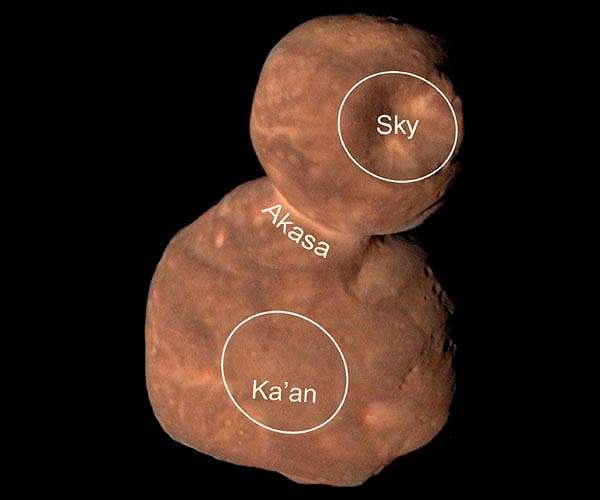7.04.2024

Scientists at Brown University, in collaboration with the SETI Institute, have unveiled findings from a new study that may rewrite the narrative on the behavior and composition of distant solar system objects, particularly a Kuiper Belt Object known as 486958 Arrokoth, affectionately dubbed the "space snowman."
The research highlights Arrokoth's ability to retain ancient ices within its core, challenging the long-held belief that such primordial materials would have dissipated over the billions of years since the solar system's formation. This discovery implies that Arrokoth, and potentially many other Kuiper Belt objects, could harbor these ancient ices, dating back to the solar system's inception approximately 4.6 billion years ago.
Sam Birch, a planetary scientist at Brown and a co-author of the study, emphasized the significance of their mathematical model, which suggests that these primitive ices can remain encased within the objects' interiors for extended periods. This model stands in contrast to previous thermal evolutionary models, which did not account for the durability of temperature-sensitive ices like carbon monoxide.
The study, published in the journal Icarus, introduces a model that explains how the sublimation process within these objects is significantly slowed down, thanks to their porous interiors. This process creates a "domino effect," where the interior becomes colder, reducing sublimation rates and trapping gases within, effectively turning these objects into dormant "ice bombs."
This insight was further elaborated on by Birch and Orkan Umurhan, a senior research scientist at the SETI Institute and co-author of the paper. Their findings propose that as these objects shift closer to the sun, the trapped volatile gases become unstable, potentially explaining the explosive activity observed in comets originating from the Kuiper Belt.
This research not only challenges existing comet evolution theories but also has practical implications for future comet exploration missions, such as NASA's Comet Astrobiology Exploration Sample Return (CAESAR) mission. Understanding the preservation of primitive materials in these distant objects could enhance the mission's sample collection strategies, offering new perspectives on cometary evolution and activity.
The implications of this study extend beyond academic curiosity, suggesting vast reservoirs of primordial material may lie undisturbed across the outer solar system, waiting to be discovered or brought back to Earth for further study. The research received support from the Heising-Simons Foundation and the New Horizons Kuiper Belt Extended Mission.
Quelle: SD
